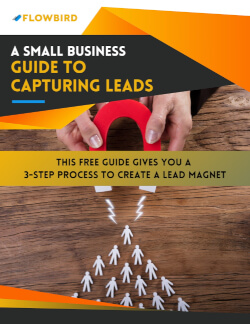It's a big question. Marketing automation benefits businesses and consumers; life would be very different without it.
As a consumer, you encounter marketing automation every day. Marketing automation results in the emails you receive, the posts you see on Facebook, and the adverts you see on Google. The products and services that you need as a consumer are offered to you on a plate exactly when you need them.
As a business, the prospect of a world without marketing automation is daunting. It plays a big role in your marketing strategy and makes your life significantly easier. Without it, how would you reach new prospects? How would you know when your leads are sales-ready? How would you retain customers?
In this article, we'll look at some things that would be different if marketing automation didn't exist.
What would change if marketing automation didn’t exist?
It would be difficult to reach new customers.
As a small business, you probably rely on marketing automation to reach potential new customers. Without it, it would be difficult to get your voice heard.
Marketing automation enables you to target your ads to specific groups of people. This increases your likelihood of finding success within your audience.
If marketing automation were removed, you'd be forced to take a stab in the dark approach. Turning to market initiatives that cost a lot but offer little in return would decrease your ROI.
Messages would have to be generalised.
If marketing automation didn't exist, you wouldn't be able to tailor your marketing to your prospects as you do today.
You can gain information on your prospects from their interactions with your emails and website. Your marketing automation system can segment the contacts based on their differences and enter them into the relevant campaigns.
Without marketing automation, you'd have far less data on your prospects. You'd have to generalise your messages, hoping they'd impact at least some of the recipients.
Sales-ready leads would slip through your fingers.
Marketing automation lets you capitalise on sales-ready leads at precisely the right time.
As prospects pass through the various stages of the buyer's journey, they perform actions (such as clicking a certain email link or signing up for a particular download) indicating they are sales-ready.
At this point, your automation system may trigger a task for a sales team member to follow up on the lead.
Without marketing automation, knowing which of your prospects are ready to buy would be very difficult. You'd likely miss out on closing some of your sales-ready leads.
Without the insights gained through marketing automation, you'd likely revert to laborious and unreliable tactics such as cold-calling. This type of marketing could see you pushing potential customers away.
Retention rates would drop.
Retaining a loyal customer is far more cost-effective than obtaining a new one. Many businesses capitalise on this by investing time in upselling to their current customers.
Automation plays a key role here. Based on a customer's purchase history, your automation system can add them into a workflow. They will receive a sequence of emails recommending relevant products and offers. Once set up, this type of automation is an effortless way to retain customers.
If marketing automation didn't exist, it would be challenging to automate upsells. Unfortunately, being part of a small business, time is not on your side (especially when you're without marketing automation!). It's unlikely that upselling to your customers would be your top priority. As a consequence, you would probably see your retention rates slip.
At Flowbird, we hate to imagine a world without marketing automation. It encompasses almost everything we do, and we see its positive impact on our client's businesses every day.
If you live in a world without marketing automation, contact us today. You won't look back once you've got marketing automation on your side.